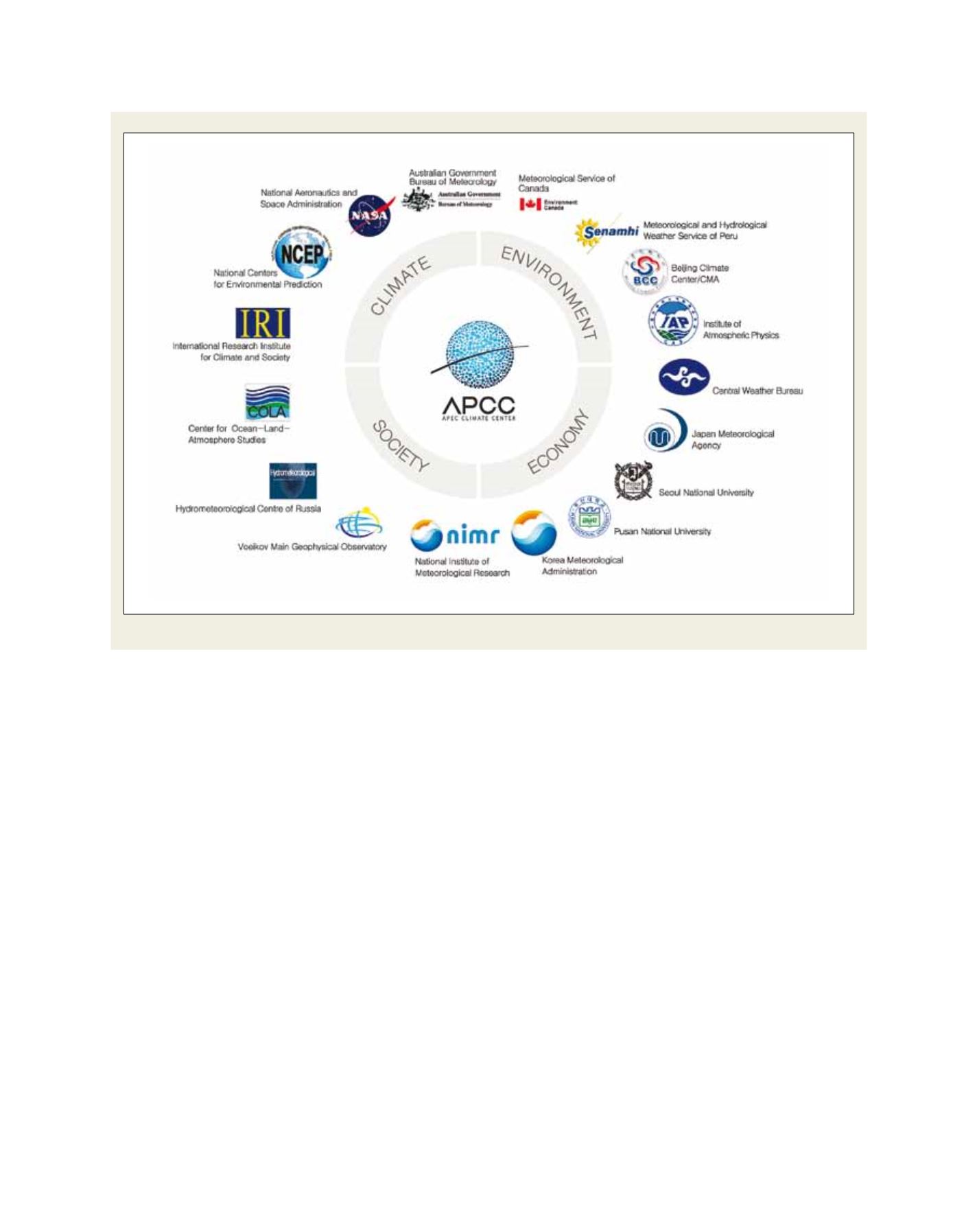

[
] 237
C
ommunities
to initiate a regional operational seasonal forecast by
collecting downscaled forecasts to the local stations.
This reflects the strong potential of existing regional
organizations to strengthen the value chain of
climate information. Such trainings and workshops
also provide the opportunity to get feedback from
users for further improvement of CLIK, which is kept
under continuous revision.
APCC interacts with users and publicizes its prod-
ucts and services through various international
outreach activities. Since its inception, APCC has
organized the annual APEC Climate Symposium
(APCS). The APCS is a venue for stakeholders and
scientists from around the Asia-Pacific region to gather
together and exchange information and best practices.
In this forum, interactions take place between infor-
mation providers (climate scientists or dynamical
seasonal forecast providers) and between providers
and customers (NHMSs from developing countries and
experts from different sectors). In the early years of the
APCS, the dialogue revolved primarily around infor-
mation exchange among climate scientists. However,
as the importance of user interaction has become
more widely recognized, the focus of the APCS has
shifted towards the practical application of climate
Seasonal forecast information is formally disseminated through
the APCC webpage and a basic climate outlook is distributed by
email. In addition to the formal dissemination of its seasonal predic-
tion products, APCC has developed a web-based tool, the Climate
Information Tool Kit (CLIK).
3
CLIK is an online interface with
some user functionality which allows users to access and customize
the APCC MME seasonal forecast. It also provides the capability to
statistically downscale the seasonal forecast to the region of interest.
As an online tool, CLIK does not require any additional program
installations or data except for a basic web browser, unless the user
chooses to downscale the seasonal forecast with respect to their own
station data. Since its launch in 2009, usage and recognition of the
tool have continually increased.
The goal of CLIK is to enhance the accessibility of seasonal
forecast information with low requirements in terms of prior
knowledge or tools. APCC has hosted several series of training
and workshops on CLIK for a variety of users (representatives
from NHMSs, as well as experts from sectors such as hydrol-
ogy, agriculture and environmental sciences) and the importance
of tools that lower barriers to the access and use of climate
information has been clearly recognized. The participants and
stakeholders have been overwhelmingly appreciative about the
ease of use and the fact that CLIK requires little advance train-
ing or tools. After a workshop with the Association of Southeast
Asian Nations, the enthusiasm over CLIK resulted in a proposal
Multinational contributors to APCC MME seasonal forecasts
Source: APCC
















